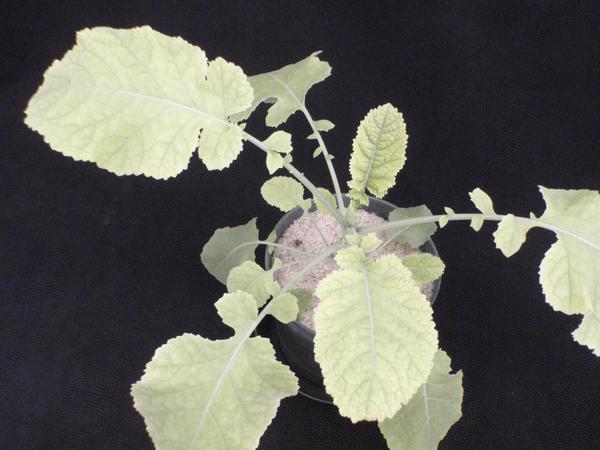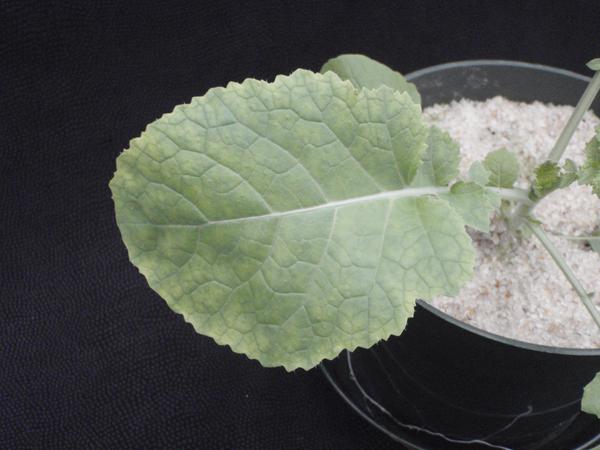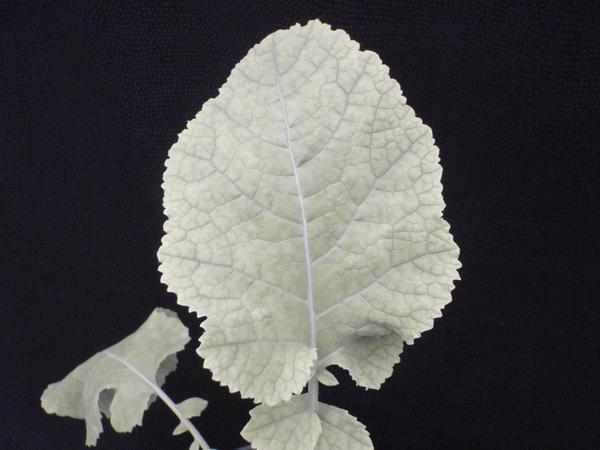From the Field - Agronomy Notes
In this Brassica carinata (Ethiopian mustard) research update, we highlight the symptoms of iron deficiency. These images are part of a project by the Southeast Partnership for Advanced Renewables from Carinata (SPARC) to develop a diagnostic series for the identification of nutrient disorders of Carinata. Carinata is an exciting new crop in the Southeast used for a wide variety of primary and secondary agricultural products including cover crops, feedstock, high protein meal, and jet fuel. It is similar in management to canola given both canola and carinata are winter annual Brassica oilseed crops. However, carinata oil is not edible.
Symptoms
Iron (Fe) in plants is critical for the function of plant metabolism due to its importance in oxidation-reduction reactions (Fe2+ ↔ Fe3+ + electron). Iron is required for the synthesis of chlorophyll, the decomposition of hydrogen peroxide, and electron transport during photosynthesis, among many other catalytic reactions essential for plant function. Low potassium supply can exacerbate Fe deficiency. Amelioration of soil Fe status is challenging due to the small amounts needed, the ability of Fe to precipitate in soils, and the formation of Fe compounds that cannot be taken up by the plant. In cases where Fe deficiency is diagnosed, foliar applications are likely to be most effective. In those cases, repeated applications may be necessary, since Fe is generally not mobile in plant tissue. Iron deficiencies are more common on alkaline or calcareous soils because Fe is less available in soils with high pH compared to those with pH < 7.
Iron deficiency manifested early in carinata. Growers should take a particular interest in monitoring this element for deficiency given its rapid development. Iron is an immobile element, so symptomology will manifest in the upper foliage or new growth rather than the old or lower foliage (Figure 1). This will help distinguish Fe deficiency from magnesium.
In its beginning stages of Fe deficiency, a very subtle Fe chlorosis will develop on the marginal tip of the upper foliage (Figure 2). This chlorosis will be restricted to the leaf tip and margin and will be subtle.
The next stage in iron deficiency results in Fe chlorosis being more pronounced and moving toward the leaf base and midrib (Figure 3). As Fe continues to be limiting in the plant, chlorosis will advance further resulting in a starker contrast between the green veins and the paler interveinal regions.
As Fe deficient conditions persist, the entire portion of the leaf will show interveinal chlorosis. Any new growth will also show signs of interveinal chlorosis (Figure 4). To ensure proper diagnosis the above material should be used in conjunction with a leaf tissue sample and / or field test.
Key Contacts
Key Contact Central East:
Dr. Angela Post, NC State Univ. Department of Crop and Soil Sciences – angela_post@ncsu.edu
Dr. Carl Crozier, NC State Univ. Department of Crop and Soil Sciences – ccrozier@ncsu.edu
Key Contact South East:
Dr. Michael Mulvaney, UF/IFAS West Florida Research and Education Center – m.mulvaney@ufl.edu
Primary Authors: Paul Cockson, Dr. Carl Crozier, Dr. Ramon Leon, Dr. Michael Mulvaney, Dr. Angela Post, and Dr. Brian E. Whipker
Project Team: NC State Univ. personnel Paul Cockson (NC State B.S. student in Agroecology), Ingram McCall (Research Technician in Horticultural Science at NC State), Dr. Carl Crozier (Professor and Extension Specialist at NC State), Dr. Ramon Leon (Assistant Professor at NC State), Dr. Angela Post (Assistant Professor and Extension Specialist NC State), and Dr. Brian Whipker (Professor of Floriculture and Plant Nutrition in Horticultural Science at NC State). Univ. of Florida personnel Dr. Michael Mulvaney (Cropping Systems Specialist at UF/IFAS West Florida Research and Education Center.
Publication date: Jan. 1, 2021
N.C. Cooperative Extension prohibits discrimination and harassment regardless of age, color, disability, family and marital status, gender identity, national origin, political beliefs, race, religion, sex (including pregnancy), sexual orientation and veteran status.







